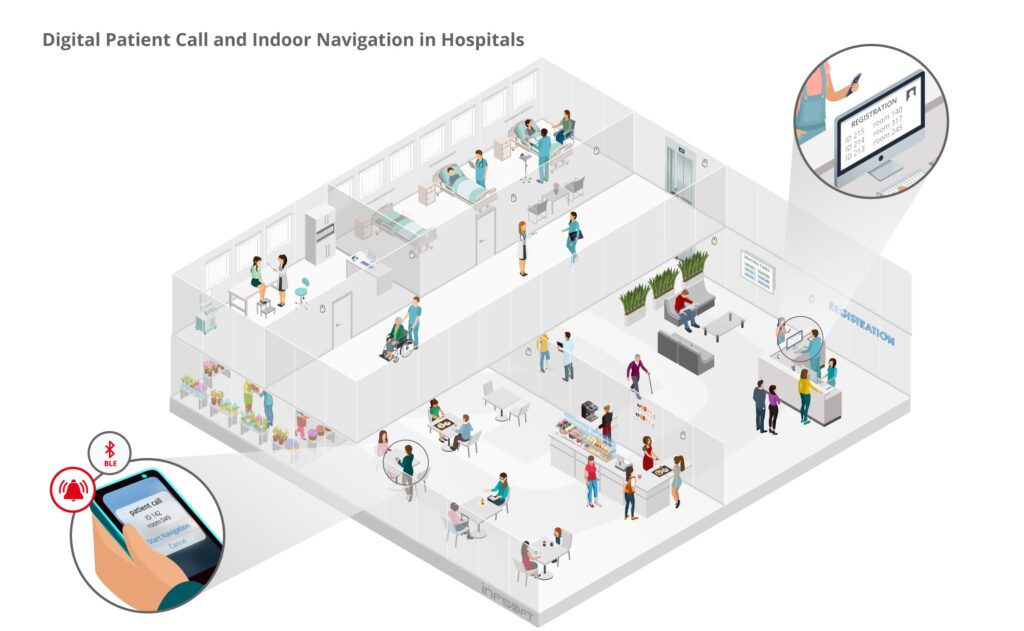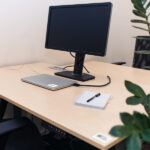In healthcare facilities, a mobile app enables a digital patient call system, increasing patient satisfaction and relieving staff.
AT A GLANCE
- patient call via smartphone app
- client-based localization of patients
- indoor navigation to treatment room
PROBLEM DEFINITION
Many healthcare facilities have set themselves the task of improving processes in their crowded waiting areas. For patients, it can be very challenging and frustrating to be stuck in a waiting room for an uncertain period of time. Also, waiting areas are often overcrowded and do not offer enough space for all those who are waiting. This results not only in stressed patients but also in stressed staff trying to intercept the patient’s displeasure.
SOLUTION
An intelligent call management system is being set up in the hospital to automate and optimize the processes in the waiting area. In addition, installed Bluetooth beacons enable indoor navigation within the building. By calling up patients via smartphone, they can use their waiting time much more flexibly and efficiently.
Appointments in the clinic are easily and digitally assigned: the patients receive a treatment ID, which they can enter in an app installed on their smartphone. Employees can select treatment IDs in a web application and call the patients virtually when it is their turn. The patients receive a push message on their smartphone and can start a navigation to the treatment room. The push function can also be used to communicate treatment delays to the app users.
The web application presents hospital staff with statistical evaluations that can provide useful information, for example for quality management or process optimization.
TECHNICAL IMPLEMENTATION
Bluetooth Low Energy (BLE) beacons are installed throughout the hospital. For navigation purposes, a mobile device receives Bluetooth signals from the beacons and uses the signal strength measurement for localization. This requires an app. Via the app, users can follow turn-by-turn directions that navigate them directly to their appointment.
The patient’s treatment ID is generated in the infsoft LocAware platform® or the hospital’s system and linked to the user’s mobile device by being stored in the app. A back channel is used for sending push notifications to the user’s smartphone (e.g. patient call). Web services enable a simple and fast bidirectional exchange of information with the hospital information system.
With the help of the infsoft Analytics tool, analysis data (e.g. typical time between calling and appearance of patients) can be retrieved.







